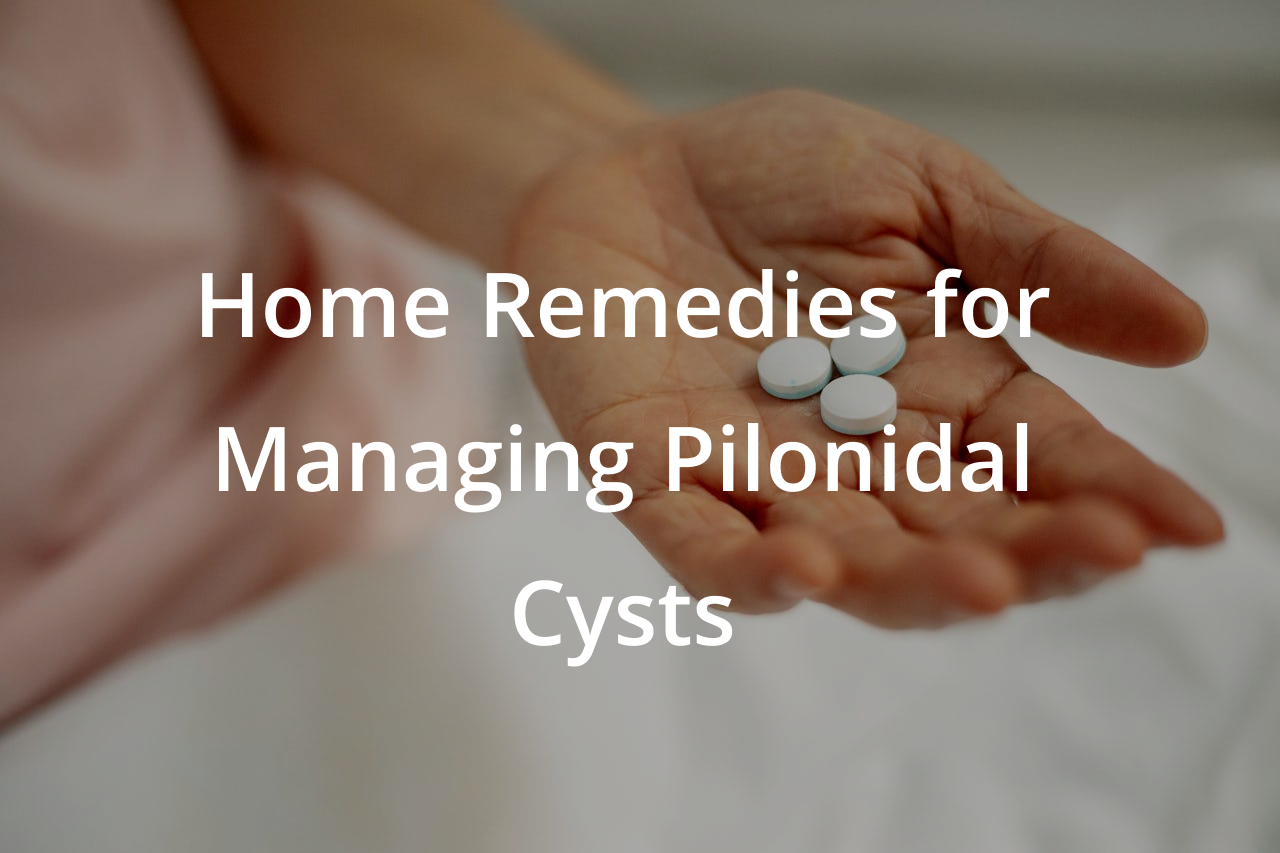Aug 02,2024
Home Remedies for Managing Pilonidal Cysts
Pilonidal cysts, a common affliction particularly among young adults, involve the development of painful and often stubborn cysts at the base of the tailbone. While medical interventions are sometimes necessary, especially in severe cases, many seek home remedies to manage symptoms and alleviate discomfort. As a medical professional experienced in treating pilonidal disease, Dr. Som understands the importance of effective at-home care. This blog outlines several home remedies to help manage pilonidal cysts and relieve temporary pain.
Warm Compresses
- How It Helps: Applying a warm compress to the affected area can significantly reduce pain and discomfort associated with pilonidal cysts. The warmth helps increase blood circulation, promoting healing and reducing swelling. It also helps the cyst drain more effectively if it is open or has formed an abscess.
- Application: Soak a clean cloth in warm water, wring out the excess, and apply it directly to the cyst for 15-20 minutes. Repeat several times a day, especially when the cyst feels particularly painful.
Essential Oils
- Types and Benefits: Certain essential oils have natural anti-inflammatory and antibacterial properties that can be beneficial in managing pilonidal cysts. Tea tree oil, for instance, is renowned for its antimicrobial properties, while lavender oil can soothe the skin and reduce inflammation.
- Application: Mix a few drops of essential oil with carrier oil, such as coconut oil or almond oil, to dilute it. Apply this mixture directly to the affected area with a cotton swab. Note: Always perform a patch test first to ensure no allergic reaction to the essential oils.
Aloe Vera
- How It Helps: Aloe vera is well-known for its soothing and healing properties. It can provide relief from the pain and also has natural antiseptic qualities that may help prevent infection.
- Application: Pure aloe vera gel should be applied directly to the pilonidal cyst. The gel can be extracted from an aloe vera plant leaf or bought as a pure, organic product from a health store. Apply the gel several times a day, especially after bathing.
Epsom Salt Baths
- Benefits: Epsom salt, or magnesium sulfate, can help reduce pain and inflammation associated with pilonidal cysts. An Epsom salt bath can also help the cyst to drain naturally by softening the skin and the abscess.
- How to Use: Dissolve a generous amount of Epsom salt in a warm bath and soak for 15-20 minutes. The warm water will also help relieve discomfort, similar to a warm compress but on a larger scale.
Good Hygiene Practices
- Importance: Maintaining cleanliness in the affected area is crucial for preventing infections and promoting healing. Regular washing can help remove dirt and bacteria that may complicate the condition.
- Best Practices: Wash the area daily with mild soap and warm water. Avoid aggressive scrubbing, which can irritate the skin further. Ensure the area is dry before wearing clothes, as moisture can exacerbate the condition.
Hair Removal
- Why It Helps: Hair can exacerbate pilonidal cysts by increasing the risk of ingrown hairs and infection. Removing hair around the affected area can reduce the risk of further complications.
- Method: Consider using a hair removal method that is less likely to irritate the skin, such as electric trimming or laser hair removal. Avoid shaving with a razor, which can cause cuts and increase the risk of infection.
Conclusion
While these home remedies can provide relief and support in managing pilonidal cysts, they are not a substitute for professional medical treatment in severe cases. If your symptoms persist or worsen, it is essential to consult a healthcare provider. Regular monitoring and appropriate medical care are crucial, especially if the cyst becomes infected or frequently recurs. With the right combination of home and professional care, managing pilonidal cysts can be more comfortable and less disruptive to your daily life.
